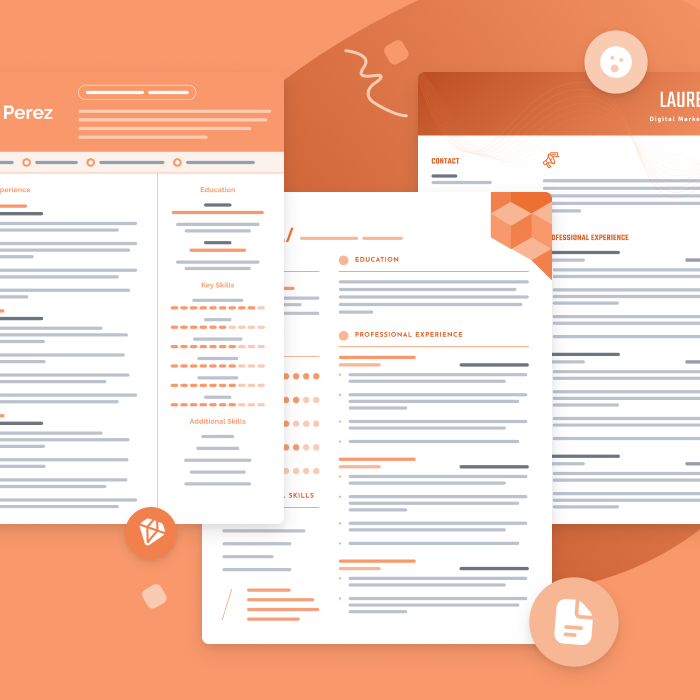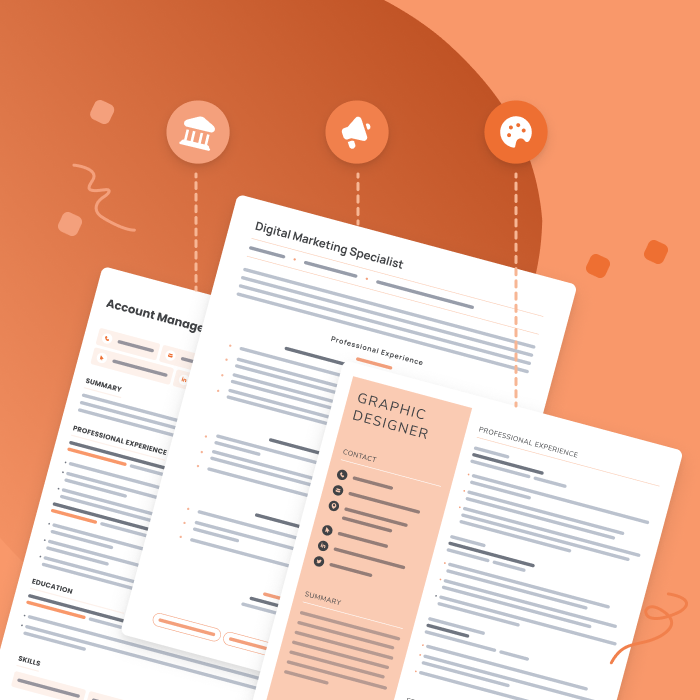Many U.S. companies are controversially reducing roles for diversity, inclusion, and equity (DEI) professionals.
Despite this, 2024 data shows that, while developing these programs can be difficult for companies, they remain vitally important for businesses, HR teams, and job seekers.
The following statistics, sourced from academic research and workplace surveys, highlight key issues in the current DEI landscape and the ongoing importance of these topics in the workplace.
Our workplace diversity statistics cover the following areas:
- DEI initiatives and the LGBTQIA2S+ community
- Benefits of diversity on business performance
- The importance of workplace diversity to today’s workers
- The state of workplace diversity in 2024
- Efforts to improve workplace diversity
Are you looking for other career-related statistics? Check out our human resources (HR) statistics and cover letter statistics for more insights.
DEI and the LGBTQIA2S+ community (8 statistics)
Exploring the state of DEI efforts in 2024 support of the LGBTQIA2S+ community reveals strides and setbacks. These 9 statistics highlight the progress towards equality in the workplace for LGBTQIA2S+ and the challenges that remain.
- According to a 2022 Gallup poll, 9% of U.S. workers identify as LGBTQ+. However, less than a third of these employees strongly agreed that their organizations genuinely care about their well-being, treat them fairly, or will do the right thing about ethics or integrity issues (Gallup, 2022)
- Over 40% of LGBTQ+ workers have reported experiencing discrimination at work — including being fired, not hired, or harassed because of their sexual orientation or gender identity (UCLA Williams Institute, 2021)
- 57% of LGBTQ+ employees who have experienced discrimination or harassment at work reported that their employer or co-workers were motivated by religious beliefs (UCLA Williams Institute, 2021),
- 68% of LGBTQ+ employees have reported hearing negative slurs, jokes, or comments (UCLA Williams Institute, 2021)
- LGBTQ+ women make up 2.3% of entry-level employees — but only 1.6% of managers, with even smaller shares at more senior levels (McKinsey, 2020)
- A rising number of Fortune 500 companies are offering benefits to their LGBTQ+ employees. For instance:
- 96% include sexual orientation in their non-discrimination policies
- 94% include gender identity
- 71% offer transgender-inclusive benefits (International Labor Organization, 2021)
- 1 in 4 LGBTQ+ entrepreneurs hide their identity from potential investors, with 18% doing so in fear that it could impact their fundraising (Proud Ventures, 2021).
- Four openly LGBTQ+ CEOs head America’s largest corporations, with only one being a woman and none being trans:
- Tim Cook of Apple
- Jim Fitterling of Dow
- Jeffrey Gennette of Macy’s
- Beth Ford of Land O’Lakes (USA Today, 2023)
DEI and business performance (7 statistics)
The evidence is clear that diverse businesses are more innovative and profitable. The following statistics explore how DEI is a critical driver of business success and the progress that has been made in recent years.
- According to McKinsey & Company, institutional investors allocate over twice as much capital (2.6X) to private equity deal teams that have more gender diversity.
- 34% of companies with women CEOs have “balanced boards” i.e. board members come from diverse backgrounds and skills — compared to just 19% of companies with men as CEOs (Deloitte, 2022).
- Companies with the greatest racial/ethnic diversity (top 25%) at the leadership level are 36% more profitable than similar companies with the lowest level of racial/ethnic diversity (bottom 25%) (McKinsey & Company, 2020).
- Companies with the greatest gender diversity at the leadership level (top 25%) are 25% more likely to have above-average profitability than similar companies with the lowest gender diversity (bottom 25%) (McKinsey & Company, 2020).
- Executive teams with more women (over 30% women) are 48% more profitable than teams with less women (under 10% women) (McKinsey & Company, 2020).
- 86% of business leaders say that incorporating DEI into everyday work and measuring outcomes is important to their organization’s success (Deloitte, 2023).
- According to US workers, the top reasons for implementing DEI at their offices were:
- It was the right thing to do (50% named it in their top 3)
- There was a need to satisfy employee expectations (48%)
- DEI efforts help attract, engage, and retain talent (48%)
- DEI provides business benefits, such as increased revenue and productivity (21%) (Workable, 2021)
How important is workplace diversity to workers? (21 statistics)
Workplace diversity matters to employees, period. These statistics explore how companies that build diverse, equitable, and inclusive workplaces inspire employee loyalty — and how failing to do this will motivate employees to start writing a resume for a new job.

The best resume templates for 2024
One of the best ways to make your resume is by filling out one of our free resume templates. All our templates are designed by experts and free to download for Microsoft Word or Google Docs.
Why DEI matters to employees
According to a 2023 Pew Research Center report on U.S. workers’ perceptions of DEI in the workplace:
- A third of workers value racial/ethnic diversity (32%), 28% value age diversity, and 26% value gender-balanced offices. 18% of workers value sexual orientation diversity. (Pew Research Center, 2023).
- According to a 2023 Statista poll, 32% of U.S. workers say that it’s extremely or very important to them to work with people of different races and ethnicities — 28% said that working with employees of different ages was extremely or very important (Statista, 2023).
- A significant political divide exists concerning DEI, with 78% of Democratic workers endorsing DEI efforts compared to only 30% of Republicans, highlighting a stark contrast in the perceived value and impact of DEI policies (Pew Research Center, 2023).
- Half of the workforce believes it’s crucial to work in an environment that is fully accessible for persons with physical disabilities. 76% of office workers think their employer has invested at least some effort into making their workplace more accessible (Pew Research Center, 2023).
- While 45% to 57% of U.S. workers see no impact of gender, race, or ethnicity on an individual’s success, there’s a broad consensus that being a man or white offers advantages compared to the challenges faced by women and persons who are Black or Hispanic/Latinx (Pew Research Center, 2023).
- Over half of employed U.S. adults (56%), believe that focusing on increasing DEI at work is a good thing — 16% say it’s a bad thing and 28% say it is neither good nor bad (Pew Research Center, 2023).
- 78% of Americans believe it’s important to work for a company that values DEI (CNBC, 2021).
- 93% of workers consider DEI personally important — not just at work (Workable, 2021).
- In a 2021 survey, virtually all U.S. employees reported that they would value on-the-job DEI training:
- 70% said DEI training is important (61%) or very important (9%)
- 30% said DEI training is somewhat important (Traliant and WBR Insights, 2021)
How DEI shapes job searching
DEI is becoming an increasingly influential factor for job seekers, with growing numbers of candidates prioritizing diversity in potential employers — and showing that they’re willing to turn down offers from companies that fall short in these efforts.
- 37% of bosses say candidates expect to learn about their company’s DEI efforts (Monster, 2022).
- 74% of job seekers report that corporate investment in DEI is important when considering a new company (Indeed & Glassdoor, 2023).
- DEI is a shared priority for men and women job seekers — 76% of women and 72% of men consider corporate investment in DEI important when deciding whether to accept a job offer (Glassdoor, 2023).
- However, women leaders at U.S. companies are more than 1.5 as likely as men in equivalent positions to have left a job to work for a company that was more committed to DEI (McKinsey & Company, 2022).
- 32% of job seekers won’t even apply to companies lacking in diversity (Glassdoor, 2020).
- A survey by Indeed and Glassdoor showed that a majority of workers aged 18 to 34 would consider turning down or leaving a job for these DEI-related reasons:
- Their manager didn’t support DEI initiatives (72%)
- There was a gender imbalance in the company’s leadership (67%)
- The company’s leadership was lacking in racial/ethnic diversity (65%) (Indeed & Glassdoor, 2023)
- However, opinions on the importance of DEI in job selection vary by age and race/ethnicity. According to a Glassdoor report from 2022:
- Among white workers, DEI is more important to younger generations — 77% of Millennials and Gen Zers prioritize it, compared to 67% of Gen Xers and Baby Boomers.
- Hispanic workers show a similar trend — 82% of Millennials and Gen Zers value DEI in job selection, compared to 69% of Gen Xers and Baby Boomers.
- By contrast, older Black workers place a higher importance on DEI in job selection — 84% of Gen Xers and Baby Boomers prioritize it, versus 77% of Millennials and Gen Zers (Glassdoor, 2022).
- 80% of Black workers surveyed said they’d consider turning down or leaving a job if their manager didn’t support DEI initiatives (Indeed & Glassdoor, 2023).
Views on DEI by demographic group
While most workers recognize the importance of DEI in the workplace, there are varying perspectives to consider among different demographic groups, reflecting generational and gender differences in attitudes toward diversity and inclusion.
- On average, 74% of U.S. employees think a company’s commitment to DEI is important. Members of BIPOC communities show even higher levels of support:
- Asian American/Pacific Islander (82%)
- Black (79%)
- Hispanic/Latinx (77%) (Indeed & Glassdoor, 2023)

Resume examples for different industries
Not sure what your resume should look like? The best way to learn is by taking inspiration from resume examples written by other candidates in your industry.
- Women tend to view DEI as important more often than men. However, according to a 2022 Glassdoor survey, the disparity is larger among older generations.
- Gen Z: 76% of women and 77% of men
- Millennials: 79% of both men and women
- Gen X: 76% of women and 69% of men
- Boomers, 70% of women and 56% of men (Glassdoor, 2022)
- Overall, younger workers are more likely than older workers to say DEI is important when looking for a new job:
- 80% of 18 to 34-year-olds
- 74% of 35 to 54-year-olds
- 61% of workers over 65 (Glassdoor, 2022)
- 53% of Gen Z recruiters emphasize building a diverse workforce (Monster, 2022).

The best format for your resume
Learn how to pick a resume format that highlights your strengths and downplays your weaknesses by reading our HR-approved guide.
The state of workplace diversity in 2024 (34 statistics)
Since 2021, many large U.S. companies have made good on DEI commitments to diversify their workforces — although management and executive roles remain overwhelmingly white. Many employers, including prominent tech companies, have also announced layoffs amid an economic slowdown. Despite these challenges, most workers perceive DEI positively, and DEI investments are still projected to double by 2026.
How equitable and inclusive are workplaces today?
Data in recent years continues to highlight persistent discrimination and slow progress on equality for women and people of color at U.S. companies. These statistics underscore the need for consistent and thoughtful DEI efforts to address systemic inequalities in the workforce.
According to a 2023 Bloomberg analysis of 88 S&P 100 companies (representing over 9 million workers):
- Hispanic/Latinx, Asian, and Black people made up the vast majority of new hires in 2021 (the most recent year for which data is available), representing 94% of total headcount growth that year. The breakdown by race/ethnicity was:
- Hispanic/Latinx (40%)
- Black (23%)
- Asian (22%)
- White (6%)
- Other (8%) (Bloomberg, 2023)
- At companies where overall employment shrank in 2021, white workers made up 69% of the losses — 17% were Black, 10% were Hispanic and 2% were Asian (Bloomberg, 2023).
- In 2021, the share of executive, managerial, and professional roles held by people of color increased by 2% compared with 2020 — more than double the average annual gains at large and mid-sized US companies in previous years (Bloomberg, 2023).
- Despite these dynamics, at the close of 2021 white people still held a disproportionate share of senior positions at S&P 100 companies, including 74% of executive roles and 63% of manager positions.
The most recent data from the U.S. Bureau of Labor Statistics also reflects significant gender and racial/ethnic disparities across many industries and occupations.
Legal occupations represent the least racial and ethnic diversity among all job categories in the U.S.
The least racially diverse job categories in America
Source: U.S. Bureau of Labor Statistics (2023)| Business and financial operations | |||
| Arts, design, entertainment, sports, and media | |||
| Architecture and engineering | |||
| Education, training, and library | |||
| Management | |||
| Legal |
Computer and mathematical and construction and material moving occupations are among the job categories where women are most underrepresented.
U.S. job categories where women are underrepresented
Source: U.S. Bureau of Labor Statistics (2023)| Computer and mathematical | |
| Protective service (e.g. police, guards) | |
| Transportation and material moving | |
| Architecture and engineering | |
| Installation, maintenance, and repair | |
| Construction and extraction |
Logging workers and chief executives are among the least diverse jobs in the U.S.
The least diverse jobs in America
Source: U.S. Bureau of Labor Statistics (2023)| Chief executives | ||
| Farmers, ranchers, and other agricultural managers | ||
| Cost estimators | ||
| Broadcast, sound, and lighting technicians | ||
| Surveying and mapping technicians | ||
| Aircraft pilots and flight engineers | ||
| First-line supervisors of firefighting and prevention workers | ||
| Cabinetmakers and bench carpenters | ||
| Electrical power-line installers and repairers | ||
| Logging workers |
- 43% of U.S. employees have either witnessed or experienced discrimination at work, including racism, sexism, ageism, and homophobia (Glassdoor, 2022).
- 47% of Black and 49% of Hispanic/Latinx workers have quit their jobs after witnessing or experiencing workplace discrimination(Glassdoor, 2020).
- Gen Z is more diverse than previous generations (Pew Research Center, 2020).
- Gen Z is 52% white, 14% Black, 25% Hispanic/Latinx, and 6% Asian.
- When Boomers were the same age as Gen Zers are today, 82% identified as white (compared to 52% of Gen Zers today).
- There are currently only 8 Black CEOs in the Fortune 500.
- Rosalind Brewer: CEO of Walgreens Boots Alliance since March 2021
- Marvin Ellison: CEO of Lowe’s since July 2018
- Thasunda Brown Duckett: CEO of TIAA since May 2021
- Christopher Womack: CEO of Southern Company since May 2023
- Calvin Butler Jr.: CEO of Exelon since December 2022
- Franklin Clyburn Jr.: CEO of International Flavors & Fragrances since February 2022
- David Rawlinson II: CEO of Qurate Retail since October 2021
- René Jones: CEO of M&T Bank since December 2017 (Fortune, 2023)
- Despite this near-record high of Black CEOs leading Fortune 500 companies today, their representation is only 1.6%. (Fortune, 2024).
DEI issues impacting women
Despite ongoing efforts by companies large and small to address gender parity in the workplace, DEI statistics reveal persistent disparities faced by women, particularly women of color.
- As of 2023, approximately 10% of Fortune 500 CEOs are women (Fortune, 2023).
- Only 1 in 4 C-suite leaders is a woman (McKinsey & Company, 2022).
- Only 1 in 20 C-suite leaders is a woman of color (McKinsey & Company, 2022).
- 32% of women in technical and engineering jobs find themselves the only woman in the room at work (McKinsey & Company, 2022).
- Since 2015, the number of women in the C-suite, including roles as president and vice president, has increased from 17% to 28% (McKinsey & Company, 2023).
- McKinsey & Company projects that American companies will achieve gender parity among executives in 29 years (McKinsey & Company, 2020).
- Globally, the share of women in senior leadership roles (Director, VP, or C-suite) increased from 31.1% in 2016 to 32.6% in 2022. This share dropped to 32.2% in the first quarter of 2023 (World Economic Forum, 2023).
- For every 100 men who are promoted from entry-level to manager:
- 87 women are promoted (the broken rung)
- 82 women of color are promoted
- 75 Hispanic/Latinx women are promoted (McKinsey & Company, 2022)
- Women in leadership roles are twice as likely as men to be mistaken for someone more junior (McKinsey & Company, 2022).
- 37% of women leaders have reported a coworker taking credit for their ideas (versus 27% of men leaders in the same situation) (McKinsey & Company, 2022).
- 12% of women leaders (compared to 6% of men leaders) have had someone say or imply that they’re not qualified (McKinsey & Company, 2022).
- 39% of women leaders have had their judgment questioned — compared to 28% of men leaders — with the number being especially high for Black women leaders (55%) (McKinsey & Company, 2022).
- 29% of women working on-site report experiencing microaggressions, compared to 19% of women working remotely (McKinsey & Company, 2022).
- Women in leadership roles are twice as likely as their male colleagues to spend time on DEI initiatives (McKinsey & Company, 2022).
- 52% of women leaders (senior managers or higher) are responsible for all of their family’s housework and childcare, whereas only 13% of men leaders are primary family caretakers (McKinsey & Company, 2022).
- It will take roughly 131 years to close the global gender gap at the current pace (defined by the World Economic Forum as gender parity in economic participation and opportunity, educational attainment, health and survival, and political empowerment) (World Economic Forum, 2023).
Pay equity for women and racial/ethnic minorities
Pay equity remains a serious issue in the U.S., with women and ethnic/racial minorities earning a fraction of their white male counterparts’ wages.
- The median income for women working full time is 83 percent that of men (U.S. Bureau of Labor Statistics, 2023).
- Compared to median hourly earnings of white workers:
- Black workers earn 76% of white wages
- Hispanic/Latinx earn 73% of white wages
- Native American/American Indian workers earn 77% of white wages (U.S. Department of Labor, 2023)
- For every dollar earned by white men:
- Black women earn 64 cents
- Native American/American Indian women earn 51 cents
- Hispanic/Latinx women earn 57 cents (AAUW, 2023 and National Women’s Law Center, 2022).
- At the current rate, women will reach pay equity in 2059 — Black women will not reach pay equity until 2130, and Hispanic/Latinx women until 2224 (AAUW, 2023 and National Women’s Law Center, 2022).
- According to Proxy Impact’s 2023 Racial and Gender Pay Scorecard Report, Target, Starbucks, Chipotle, and Mastercard report 100% equal unadjusted and adjusted racial and gender pay parity (Proxy Impact, 2023).
- 18% of U.S. workers say that pay equity is one of their company’s top 3 DEI priorities (Workable, 2021).
Workplace diversity efforts (45 statistics)
While workplace DEI programs experienced significant growth between 2020 and 2022, in 2023 there was a shift in momentum, with several large U.S. tech companies scaling back DEI programs and reducing personnel. The data and trends over the past year show that, despite initial rapid progress, there is an ongoing need for dedicated funding, strategic implementation, and rigorous monitoring of DEI initiatives.
General status of DEI efforts
Despite investment into DEI programs (and awareness of the underlying issues), the progress of these initiatives presents a mixed picture of progress amidst challenges and evolving corporate priorities.
- 47% of recruiters plan to increase DEI efforts in 2023 (Monster, 2023).
- 61% of US workers report that their company has policies ensuring fairness in hiring, pay, or promotions, and 52% have DEI training sessions or meetings (Pew Research Center, 2023).
- Over half of workers (54%) feel their company appropriately focuses on DEI, though opinions vary: 14% find it excessive, and 15% find it insufficient (Pew Research Center, 2023).
- While 21% of companies reported exceeding industry expectations on DEI, 49% felt they were on par and 30% felt they were below industry norms (Traliant and WBR Insights, 2021).
- U.S. companies spend roughly $8 billion annually on DEI training (Harvard Business Review, 2023).
- Global spending on DEI-related efforts is projected to be $15.4 billion by 2026 (Global Industry Analysts, Inc., 2021).
- 60% of U.S. companies increased their financial and staffing investments in DEI in 2022, and nearly three in four HR leaders said DEI is “critical” to their companies’ future success (McKinsey and Company, 2023).
- However, according to a LinkedIn report, despite a 168.9% growth in hires for chief diversity and inclusion officers since 2019, those roles experienced a 4.5% decline in hires in 2021 (Linkedin, 2023).
- In 2021, workers reported on their organization’s DEI efforts, saying their company was doing:
- “A lot” (33%)
- “Some” (37%)
- “Just a little” (14%)
- “Nothing at all” (12%) (CNBC, 2021)
- When asked how COVID-19 affected DEI efforts, workers reported that the pandemic:
- Did not impact DEI at their company (50%)
- Boosted their employer’s commitment to DEI (32%)
- Negatively impacted DEI, such as by complicating or delaying efforts (18%) (Traliant and WBR Insights, 2021)
- The top 5 metropolitan areas (defined by labor force size) that provide the greatest access to DEI programs are :
- Seattle (73% of companies on Glassdoor)
- Las Vegas (71%)
- San Francisco (70%)
- Boston (68%)
- Charlotte (66%) (Glassdoor, 2022)
- 25% of business leaders feel prepared to incorporate and measure DEI outcomes (Deloitte, 2023).
- Most companies (60%) don’t have DEI-dedicated roles, while 25% have one and 15% have more than one DEI-dedicated role (Culture Amp, 2022).
- 41% of companies provide access to DEI programs as a benefit(Glassdoor, 2022).
Types of DEI efforts
While a significant number of U.S. companies are adopting DEI policies and setting diversity goals, the enforcement and prioritization of these efforts vary — highlighting the complexity of implementing DEI strategies.
According to various surveys of U.S. companies:
- 90% have diversity goals (Syndio, 2022).
- 70% have programs to hire candidates from underrepresented backgrounds (Culture Amp, 2022).
- 60% hold DEI training sessions (Culture Amp, 2022).
- 56% have a DEI council or committee (Culture Amp, 2022).
- 41% have a formal DEI policy (Culture Amp, 2022).
- Of companies with DEI policies, 42% don’t have documented processes to enforce them (Culture Amp, 2022).
- 18% have an anonymous screening process (Culture Amp, 2022).
Increasing diversity throughout the company is a high priority in DEI strategies.
- The main components of corporate DEI strategies include:
- Diversity throughout the company (65% of respondents placed this in their top 3)
- Equity in opportunity, contribution, and advancement (45%)
- Team inclusivity (26%)
- Diversity at the management level (25%) (Workable, 2021)
- 78% of CEOs view attracting and retaining talent as the primary reason DEI initiatives are essential to their organizations’ purposes and social impact (Deloitte, 2023).
- 44% of CEOs say their organizations publicly share DEI information (Deloitte, 2023).
- 65% of CEOs say that DEI is integrated into their strategic priorities (Deloitte, 2023)
- More Boomer recruiters (46%) emphasize gender pay equity, compared to 36% across all generations (Monster, 2022).
- 67% of Gen Z recruiters make efforts to recruit from diverse organizations, such as:
- Historically Black Colleges and Universities (HBCUs)
- Community colleges
- Trade schools
- Local organizations that support underrepresented groups (Monster, 2022)
DEI stakeholders
DEI discussions often begin between company executives and HR, but there’s a consensus that all stakeholders must contribute to these efforts for them to succeed. Despite this, many employees would prefer to share their DEI experiences anonymously.
- According to a survey by Workable, Conversations advocating for increased DEI usually start with:
- Executives/management (47% of companies)
- HR representatives (17%)
- Non-HR employees (16%) (Workable, 2021)
- Entry-level workers (29%) are more likely than executives (22%) to think that management should be accountable for DEI outcomes (Workable, 2021).
- Around 39% of workers believe everyone should be responsible for DEI initiatives (Workable, 2021).
- 71% of employees would be more willing to share their experiences and thoughts on diversity and inclusion if they could do so anonymously (Glassdoor, 2020).
- Only 15% of companies are extremely confident that their employees feel belonging, inclusion, and psychological safety, compared to:
- 61% feel only somewhat confident
- 24% feel somewhat unconfident (Traliant and WBR Insights, 2021)
Measuring DEI progress
Most organizations engaged in DEI priorities actively track the metrics of these programs, focusing on workforce demographics, employee engagement, and representation at different levels of seniority. Despite these efforts, many companies still don’t measure their DEI progress effectively.
- The share of U.S. companies that collect DEI metrics includes:
- Demographics of the entire company (53% of companies put it in their top 3 choices)
- Employee engagement and retention (31%)
- Promotions and advancement to ensure equity (29%)
- Representation at the executive/management level (24%) (Workable, 2021)
- U.S. companies measure and analyze several metrics of diversity, including:
- Gender (81% of companies)
- Age (65%)
- Race (65%)
- Disability status (42%)
- Veteran status (40%) (Syndio, 2022)
- Caretaking responsibility (12%)
- Refugee status (11%)
- Companies update employees on DEI goals and progress:
- Every two years (33% of companies)
- Every year (30%)
- Every quarter (29%)
- More than once per quarter (8%) (Traliant and WBR Insights, 2021)
- While 93% of companies discuss meeting business goals in manager performance evaluations, only 34% report progress on DEI in their performance evaluations (McKinsey & Company, 2022).
- 40% of women leaders say that DEI work isn’t acknowledged in their performance reviews (McKinsey & Company, 2022).
- 24% of companies don’t measure the progress of their DEI commitments (Deloitte, 2023).
Areas for improvement in DEI
While DEI efforts are increasingly acknowledged as vital for companies, the latest data points to significant gaps in practice and perception. These statistics highlight the disconnect between organizational DEI strategies and the actual experiences of employees — highlighting the need for more effective implementation and accountability.
- DEI is a stated priority for 85% of global organizations — yet 31% of workers still feel a lack of diversity is a barrier to promotion (Deloitte, 2022).
- Only 40% of workers report participating in DEI training within the past year (Pew Research Center, 2023).
- 11% of recruiters say DEI programs are the first to be cut when reducing costs, along with company events and bonuses (Monster, 2023).
- 30% of U.S. workers report that their employer doesn’t share their DEI values (Glassdoor, 2022).
- 46% of companies report that leadership isn’t held accountable if workplace equity initiatives fail (Syndio, 2022).
- Black workers (28%) are the most likely to say their employer pays too little attention to DEI, compared with smaller shares of white (11%), Hispanic/Latinx (19%) and Asian (17%) workers who say the same (Pew Research Center, 2023).
- Women are more likely than men to say their employer pays too little attention to DEI (17% versus 12%). In turn, men are more likely than women to say employers pay too much attention to DEI (18% versus 10%) (Pew Research Center, 2023).
Methodology
In addition to the workforce surveys and research on US employment, recruitment, and corporate reporting cited here, we have analyzed the participation of women and racial/ethnic minorities in various occupations and occupational categories based on the 2023 Labor Force Statistics from the Current Population Survey published by the U.S. Bureau of Labor Statistics.
About Resume Genius
Since 2009, Resume Genius has combined innovative technology with leading industry expertise to simplify the job hunt for people of all backgrounds and levels of experience.
Resume Genius’s easy-to-use resume builder and wide range of free career resources, including resume templates, cover letter samples, and resume writing guides, help job seekers find fulfilling work and reach their career goals. Resume Genius is led by a team of dedicated career advisors and HR experts and has been featured in The New York Times, Forbes, CNBC, and Business Insider.
For media inquiries, please contact us.
Sources
- American Association of University Women, “Black Women and the Pay Gap”
- American Association of University Women, “Latinas and the Pay Gap”
- Culture Amp, “Workplace Diversity, Equity, and Inclusion Report: Understanding the DEI Landscape”
- Culture Amp, “DEI in 2022: Key Trends and Findings”
- CNBC, “CNBC and SurveyMonkey Release Latest Workforce Happiness Survey”
- Deloitte, “Diversity, Equity & Inclusion Benchmarking Survey”
- Deloitte, “Fall 2023 Fortune/Deloitte CEO Survey Insights”
- Deloitte, “Women in the Boardroom, 2022 Update”
- Deloitte, “Taking Bold Action for Equitable Outcomes”
- Fortune, “The Number of Black Fortune 500 CEOs Returns to Record High — Meet the 6 Chief Executives”
- Fortune, “Black CEO Representation On The Fortune 500 Is So Bad That This Year’s 1.6% Is A Near-Record High”
- Fortune, “Black CEOs on the Fortune 500 Reach New Record High in 2023—Meet the 8 Executives”
- Fortune, “Women CEOs Run More Than 10% of Fortune 500 Companies for the First Time in History”
- Gallup, “LGBT Employee Experiences: Here’s What We Know”
- Glassdoor, “Diversity and Inclusion Workplace Survey”
- Glassdoor, “Glassdoor Launches Advanced Filters to Find Companies Highly Rated for Work/Life Balance, Diversity & Inclusion, and More”
- Glassdoor, “Who Cares About Diversity, Equity, and Inclusion?”
- Global Industry Analysts, “With Global Spending Projected to Reach $15.5 Billion by 2026, Diversity, Equity, & Inclusion Takes the Lead Role in the Creation of Stronger Business”
- Harvard Business Review, “Data Driven Diversity”
- Indeed & Glassdoor, “Indeed & Glassdoor’s Hiring and Workplace Trends: Report 2023”
- International Labour Organization, “Inclusion of Lesbian, Gay, Bisexual, Transgender, Intersex and Queer (LGBTIQ+) Persons in the World of Work: A Learning Guide”
- LinkedIn, “Who’s Vaulting into The C-Suite? Trends Changed Fast In 2022”
- McKinsey & Company, “The State of Diversity in Global Private Markets: 2022”
- McKinsey & Company, “Diversity Wins: How Inclusion Matters”
- McKinsey & Company, “LGBTQ+ Voices: Learning From Lived Experiences”
- McKinsey & Company, “Women in the Workplace 2023”
- McKinsey & Company, “Women in the Workplace 2022”
- McKinsey & Company, “How the LGBTQ+ Community Fares in the Workplace”
- Monster, “Monster Work Watch Report”
- Monster, “The Future of Work: 2022 Global Report”
- National Women’s Law Center, “Native American Women Need Action That Closes the Wage Gap”
- Pew Research Center, “Diversity, Equity, and Inclusion in the Workplace”
- Pew Research Center, “On the Cusp of Adulthood and Facing an Uncertain Future: What we Know About Gen Z so Far”
- Proud Ventures, “The LGBTQ+ Founder Report”
- PwC, “Global Diversity, Equity, and Inclusion Survey”
- Research and Markets, “Diversity and Inclusion Global Strategic Business Report”
- Statista, “Share of Employed Adults with Various Opinions on The Importance of Working with a Mix of Diverse Employees in the United States In 2023”
- Statista, “U.S. Workers: Importance of Race, Gender, or Orientation to Identity by Community 2019”
- Syndio, “The 2023 Workplace Equity Trends Report”
- Traliant and WBR Insights, “How to Build an Effective DEI Program”
- Workable, “Diversity, Equity, and Inclusion in the Workplace: 2021 HR Survey”
- World Economic Forum, “Global Gender Gap Report 2023”
- USA Today, “The Corner Closet: Why There Are So Few Gay And Transgender Executives In Corporate America”
- U.S. Bureau of Labor Statistics, “Median Earnings for Women in 2022 Were 83.0 Percent of the Median for Men”
- U.S. Bureau of Labor Statistics, “Labor Force Statistics from the Current Population Survey (2023)”
- U.S. Department of Labor, “Earnings Disparities by Race and Ethnicity”














